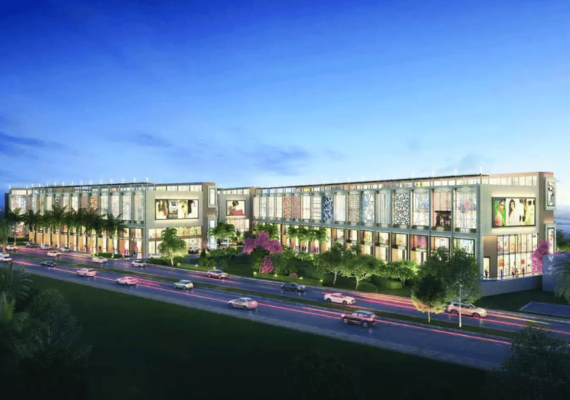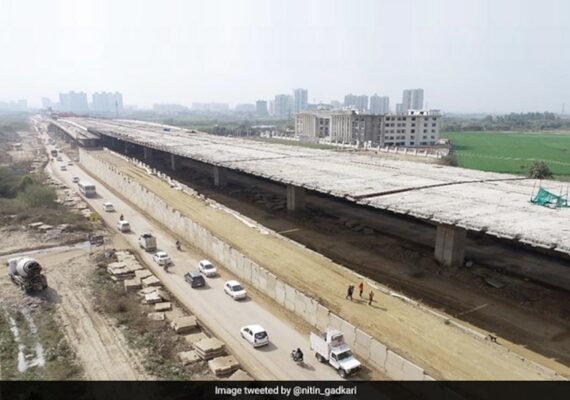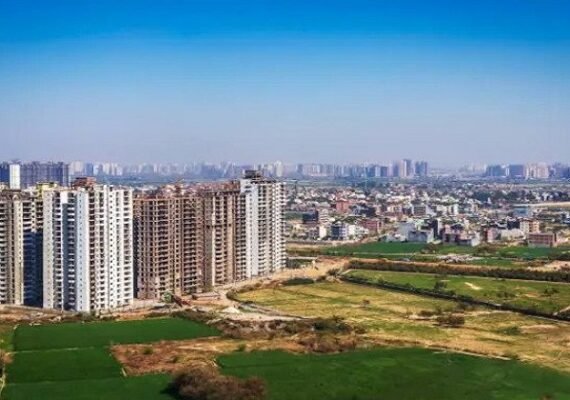Developers are carefully gauging the situation before starting new projects and if there is a third wave, they will definitely tread with caution, say experts
With the second wave of COVID-19 abating, will real estate developers who adopted a cautious approach and deferred launches since the outbreak have the confidence to announce new projects in the second half of the year?
Real estate experts said builders may not have a choice because they have been sitting on land accumulated over 15-20 years and land prices, depending on location, have been declining instead of appreciating. They must start new projects to monetise their assets, the experts said.
Housing sales declined 60 percent during the second wave and launches dropped 53 percent in April, according to a report by Edelweiss Research.
If the pandemic’s downward trajectory is sustained, the housing sector may make a good recovery by the festive quarter of 2021. Rating company CRISIL says there will be a slowdown in launches this financial year and expects developers to focus on the sale of ready or near-complete properties, leading to a gradual reduction in inventory.
It said the second wave will impact residential sector demand in the first half of 2021-22, but a healthy recovery is expected in the second half, much like in the previous financial year. Pre-pandemic levels may be reached only after 2022-23.
Supply of new launches are likely to build up in the next three to six months, according to Liases Foras, a real estate research company, which estimates that almost 90,000 units were launched in every quarter in the pre-COVID-19 era.
“We saw close to 70,000 units launched between December 2020 to March 2021. The number declined to almost 30,000 after the second wave,” said Pankaj Kapoor, founder of Liases Foras. “We may see new launches touching 90,000 units as developers are not in a position to hold land on account of running costs involved. In fact, they would be compelled to launch new projects to monetise these land banks.”
Launches in the pipeline
According to data shared by Anarock Property Consultants, 62,130 houses were launched in the top seven cities in Q1 of 2021 compared with 41,220 units in Q1 of 2020, a 51 percent increase. The Mumbai Metropolitan Region (MMR), Hyderabad, Pune and Bengaluru together accounted for 79 percent of the supply addition.
While developers turned cautious about launching projects after the second wave, the scenario in the April-June quarter of 2021 seems to be better than in the same period last year, when merely 1,400 units were launched in the top seven cities.
“We anticipate new launches to be at least 40-45% lower than the previous quarter – Q1 2021. In the January-to-March 2021 period, at least 62,130 new units were launched across the top seven cities. On a yearly basis, we anticipate new launches to see a massive jump,” said Anuj Puri, chairman of Anarock.
In 2020-21, MMR and Pune dominated the new launches with 65,000 units, equivalent to about 43% of the total new supply in the top seven cities. In the current quarter, launches are taking place in Hyderabad and Bengaluru, data by Anarock indicated.
Quite a few real estate companies may go in for launches this year.
DLF plans to scale up launches, revamp its premium and mid-income housing offerings, and continue to monetise its finished inventory across regions this year after registering a 24 percent increase in new sales bookings to Rs 3,084 crore in 2020-21.
Upcoming projects cover the entire range – from low-rise developments including independent floors and commercial units, to plotted developments and high-rises.
“It will cut across the whole spectrum from premium/luxury housing to value homes, across Gurugram, Tricity and Chennai. Today, it is difficult to judge what the state of affairs would be going forward,” said Aakash Ohri, senior executive director of DLF Home Developers Ltd. “We are gearing up to launch each of these projects as per the intended timelines.”
Max Estates, the real estate development arm of Analjit Singh’s Max Group that operates in the commercial spaces segment, said in a regulatory filing that it has decided to enter the residential sector with a focus on mid-segment housing. It is prospecting well-priced and located clear plots in the National Capital Region. Expansion plans in the residential sector will depend on the initial experience from its first project, it said.
“The time is now right for us to foray into residential real estate to widen our footprint. With trust in brand Max and access to institutional capital, we believe residential development can be a high-return, value accretive complementary line of business,” said Sahil Vachani, MD & CEO of Max Ventures & Industries Ltd., the parent company of Max Estates.
Mahindra Lifespace Developers Ltd. has a healthy pipeline of launches.
“We have a robust pipeline of launches planned in FY22. We’ve concluded three land transactions in the last five months – one each in Bengaluru, Kalyan (MMR) and Pune – all of which we expect to bring to market in this financial year. Additionally, we plan to launch a residential project at Mahindra World City, Chennai, in the third quarter of CY2021,” Vimalendra Singh, chief sales officer at Mahindra Lifespace, told Moneycontrol.
The company is working towards phased launches in projects Luminare in Gurugram, Happinest Tathawade in Pune and Alcove in Mumbai, all within this financial year, he said.
“While we are geared up in getting these projects ready for the launch, we will need to take into account the market situation due to the pandemic,” Singh added.
Parinee Group will launch five residential projects spread across 3 lakh square feet, offering three- and four-bedroomed apartments in the JVPD area of Mumbai, and a premium project in Versova, said managing director Vipul Shah.
Sugee Group has a few launches planned.
“The market would gain confidence after the vaccination drive picks up. We are expecting traction in housing sales in the second half of the year. There are two projects in the pipeline –Marina Bay (luxury) in Worli and Akansha (semi-luxury) in Dadar West,” Nishant Deshmukh, founder and MD of Sugee Group, told Moneycontrol.
Formats that are likely to dominate
The affordable and mid segment continue to dominate the new supply in most cities. In Bengaluru, the mid segment launches supersede others. Developers are extremely cautious about luxury projects, which are launched in limited number.
Builders may also look at increasing sizes of houses and apartments. In a major trend reversal, ‘bigger is better’ is once again the catchphrase in India’s housing market in the post COVID-19 pandemic era.
According to Anarock, the average apartment size in the top seven cities has risen by about 15 percent to 1,180 sq. ft. in Q1 of 2021 from 1,030 sq. ft. in Q1 of 2020. With the increasing need for work and study from home, apartment sizes are increasing for the first time in four years. Indian developers were quick to catch on that size matters again and this trend is likely to continue.
Will the third wave derail plans for new launches?
Developers are overly cautious and carefully gauging the situation before launching projects. If there is a third wave, they will definitely tread with caution, said Puri.
Will launches aggravate the problem of unsold inventory?
Real estate experts say new housing supply is largely based on demand – especially amid the pandemic, when home ownership has become a top priority for many, including millennials. Today, developers mostly launch projects after an in-depth analysis.
“This has helped them bridge the demand-supply gap and sell relatively faster, whereas many of the previous unsold stock remains so because of the demand-supply mismatch. Therefore, we are far better positioned than before. Also, we are seeing structural demand in residential real estate, which is likely to stay on,” said Puri.
According to Kapoor of Liases Foras, unsold residential inventory may continue to hover around 1.2 million units like last year.
“Whatever is getting sold is being replaced by new supply. In the December 2020-to-March 2021 quarter, as many as 70,000 units were sold and a similar number of units were launched. With real estate inventory being at almost the same level, prices may come under pressure,” Kapoor added.
Source : Money Control










